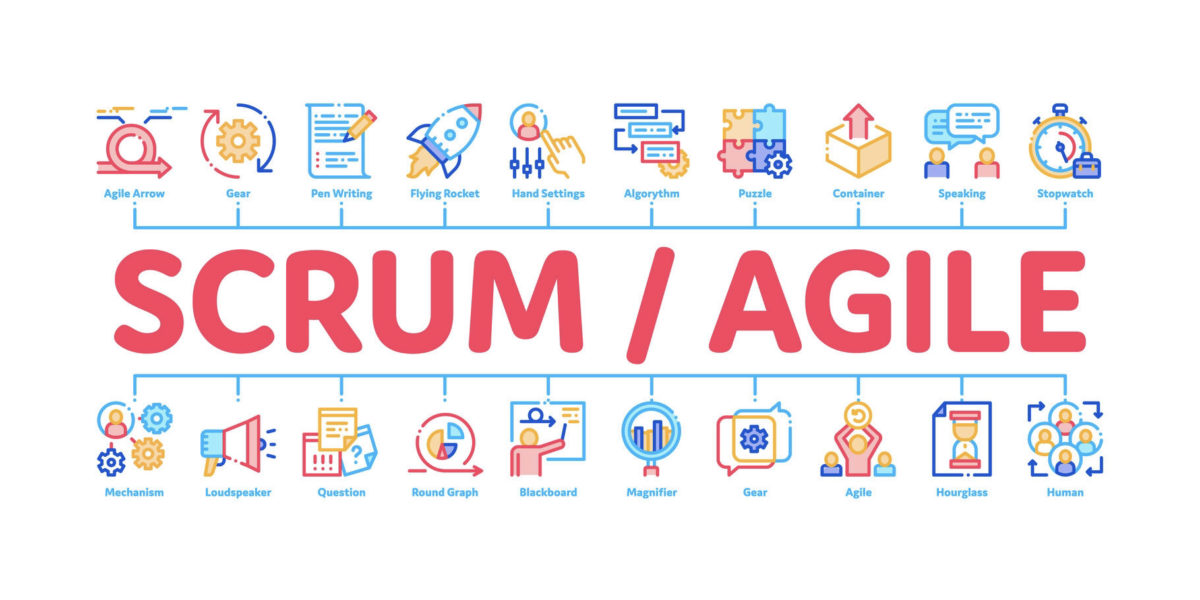As the Agile methodology gets wildly applied in various types of organizations, more and more employers are in demand of the Scrum Master to facilitate the projects. As a technical recruiter, it is recommended to get familiar with some terminologies, so that you are able to target the qualified candidates in a shorter time, and be more prepared for the candidate interviews.
Fundamental Concepts:
- Difference between Agile and Scrum: Agile is the broader umbrella which Scrum falls under. Agile has 4 main values and 12 principles. Scrum has its own set of values and principles and provides a lightweight “framework” to help teams become Agile.
- The role of the Scrum Master: A Scrum Master serves the team and shields them from any distractions that would prevent them from completing a sprint goal. They also remove blocks, teach the team to become self-organized, and serve as coach who teaches Agile and Scrum values and principles.
- Sprint planning meeting: In Sprint planning, the Product Owner presents the goal of the sprint and discusses the high priority product backlog items. The Delivery team then chooses the amount of work for the next sprint.
- Velocity: the average number of points from that past 3-4 sprints and is used to help predict when backlog items will be delivered.
- Burn-Down Chart: A burn down chart displays the amount of work a team has burned through such as hours during the sprint. Discuss how you have used these in the past.
- Retrospective: A meeting to inspect and adapt the process. There are many ways to conduct a retrospective so be ready to explain 1-2 formats.
Interview Questions
1. What are the differences between Agile and Traditional Project management?
Agile encourages that a little of everything. Design, development and testing are done at the same time. It encourages short, frequent feedback loops and embraces changes to requirements.
Whereas in traditional approach to projects, one phase it closed and completed before the next begins. In Waterfall, feedback is usually not collected until the very end of the project and changes are discouraged.
2. What are the roles in Scrum?
Scrum only prescribes 3 roles – the Product Owner, Scrum Master and the Delivery team. These roles should, ideally, be cross-functional and not shared among other projects.
Most Scrum Masters have not had the opportunity to work with a team that was cross-functional or dedicated due to the organization’s resistance or inability to allow for what some refer to as a “luxury”.
3. Name some other Agile frameworks, describe frameworks you have followed and provide scenarios.
There are other frameworks in addition to Scrum, such as Kanban, Test Driven Development and Feature Driven Development.
4. When should you use Waterfall over Scrum?
Use waterfall if the requirements are simple, predictable, fully defined and understood, and will not change.
5. Would you recommend automated testing for your project? Offer examples of any automated testing tools that your team may have used.
Scrum encourages the use of automated performance or regression testing so that you can continuously delivery software quicker.
6. How long were your sprints?
An ideal sprint length is between 1 and 4 weeks with a 2-week sprint being the most widely used.
7. What type of requirements did you use for your teams? Is it ok if someone wants to change a requirement?
Requirements in Scrum are written as user stories using a standard, “As a , I want… so that I .” A Scrum Master doesn’t necessarily write user stories, but would assist the Product Owner to ensure that user stories are written, prioritized and ready for the sprint.
Yes. Agile encourages frequent feedback from customers and stakeholders so that we can improve our product. We need to be able to embrace change.
8. What type of metrics or reports have you used?
Sprint and release burn-down and burn-up charts are standard reports. Most companies also want to understand how many stories were committed versus completed per sprint and the number of defects identified post-release to production.
9. How many Scrum teams have you managed at one time?
Although Scrum guidelines states only one Scrum Master per team, some roles may require the Scrum Master to lead more than one team. Notice the use of the word “managed” versus “led”, as Scrum Masters do not manage, they lead teams. So listen closely how candidates use these two words in their responses.
10. Describe a time when your Delivery team members didn’t seem to be getting along. How did you handle this?
Here what we are looking at is the candidate’s ability to be an effective leader. They might reflect on a time where they had a few team members that just never seemed to be able to work things out. Pay attention to ow did they encourage those team members to work together, was it a team building exercise, did they make sure their members had a common goal. Also focus on their logical thinking ability: have they stated the problem they had, how they addressed it and the outcome.
If you are looking for a Scrum Master role at startup environment, here is another article you may be interested in reading:
5 Questions a Scrum Master Should Ask Before Joining a Startup






July 5, 2020
I just want to mention I am just very new to weblog and honestly savored this web-site. Very likely I’m planning to bookmark your site . You actually come with beneficial stories. Bless you for sharing your webpage.